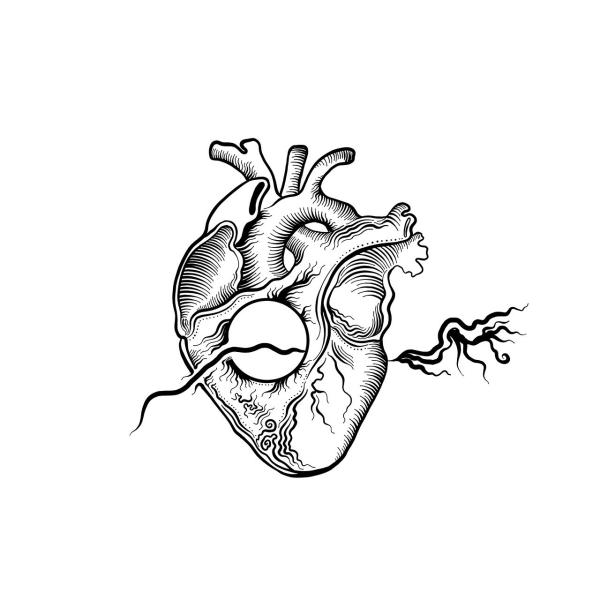Congestive heart failure (CHF) is a pump problem, and most treatments serve to strengthen the pump, reduce the volume needed to be moved or alter the piping (the arteries and veins) to accommodate the pump's failures. We will return to CHF in a moment, but first, let's talk about treating cancer with radiation.
Rays
Radiation, in sufficient doses, disrupts cell replication. In cancer treatment, the cancerous cells replicate more quickly than their “host” cells or organs, so radiation is more harmful to the cancer cells than the host (that would be you). But “off-target” radiation, dosing the host and not the cancer, can adversely impact the host. These off-target impacts on the heart have been especially well documented in women undergoing radiation therapy for breast cancer. Women receiving left-sided radiotherapy have almost twice the incidence of coronary artery disease of women receiving right-sided radiotherapy.
Ventricular tachycardia (VT) is another heart-related condition, in this instance involving the conduction system of the heart and resulting in very rapid heart rates that do not allow for adequate time to refill the heart and result in significant symptoms. In some instances of VT, “refractory” to medications, physicians apply focal intervention to the disturbed nerves through electrophysiologic treatments. There are a variety of techniques to “burn, the medical term is ablation, the nerves. In a study of focal radiation in treating VT, there was an unintended consequence: the pumping ability of impaired hearts improved, and not by an insignificant amount; the pumping capacity doubled. [1]
So, in some instances, radiation is harmful to the heart; in other cases, it is helpful. This is the time to say, “Whatever doesn’t kill you makes you stronger,” or “the dose makes the poison.” But a more appropriate term in this instance is hormesis.
“…a process in which exposure to a low dose of a chemical agent or environmental factor that is damaging at higher doses induces an adaptive beneficial effect on the cell or organism.”
We see hormesis in many biological systems. The role of hormesis in radiation remains a hotly contested regulatory issue because our regulations of many “toxins,” including radiation, are based on a linear no-threshold model (LNT) that doesn’t allow for beneficial effects of small doses.
The current research is based on scientists building “on the shoulders” of those who came before. Could a low dose of radiation be beneficial in treating CHF?
Of Mice and Men
The actual study is an exploration involving mice with CHF, given a low dose of radiation. The researchers calculated the off-target of VT radiation dose to the entire heart and applied it to three groups of mice. [2] The underlying cause of CHF in the mice differed. One group of mice had a genetically induced lipid overload; the second group had a mechanical constriction of the aorta, the major outflow from the heart, and a third group had an ischemia-reperfusion injury as we might see in individuals recovering from myocardial infarcts.
While the impacts varied across the three groups, low-dose radiation significantly improved the heart’s ability to pump blood compared to sham-controlled mice. In the lipid group, there was a “significant survival advantage.” In all instances, the improvement lasted several months.
The use of radiotherapy in ablating aberrant nerves in VT is based on the idea that high-dose radiation creates a scar, removing the impact of the abnormal nerves. However, the mechanism of action of radiotherapy at low doses is different. The researchers found that radiation treatment reduced the abundance of mRNA associated with genes involved in hypertrophy, stress, and fibrosis. There were reductions in cardiac macrophages and other cells involved in cellular “repair” and fibrosis. It seems that radiation at low doses may modulate some of the ill effects of the heart’s attempt to recover, allowing more clinically beneficial “remodeling.”
There are many caveats we can apply to the study. First, it involved mice, not people, and the three murine models fail to capture the multifactorial causes of CHF in humans. Second, remodeling of the heart involves more than alterations in transcription, so the underlying role of radiotherapy in modulating this process is incomplete.
That being said, our treatment of CHF can improve; more than 50% of patients hospitalized for CHF die within five years. Radiotherapy may be a better option for some of these patients – that will require further research. But this is another study demonstrating the real impact of radiation on biological systems. If these findings are true, then can the LNT model of radiation, where any dose, irrespective of how small, is harmful, be true?
[1] The pumping capacity was measured by the blood fully ejected from the left ventricle, the left ventricular ejection fraction or LVEF.
[2] The off-target dose was 5 Gy compared to the on-target dose of 25 Gy, so there was an 80% reduction.
Source: Cardiac radiation improves ventricular function in mice and humans with cardiomyopathy Med DOI: 10.1016/j.medj.2023.10.006




